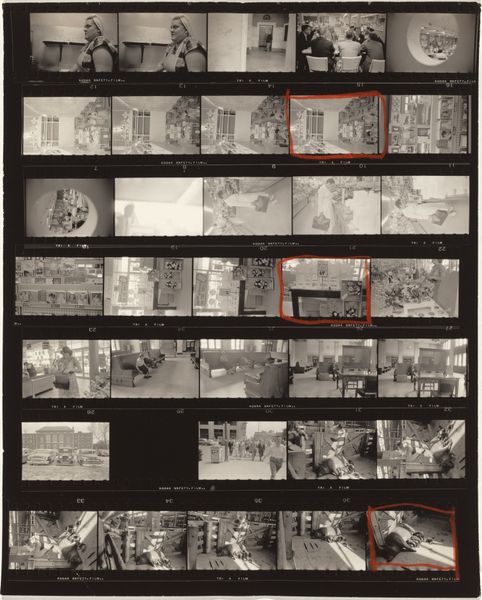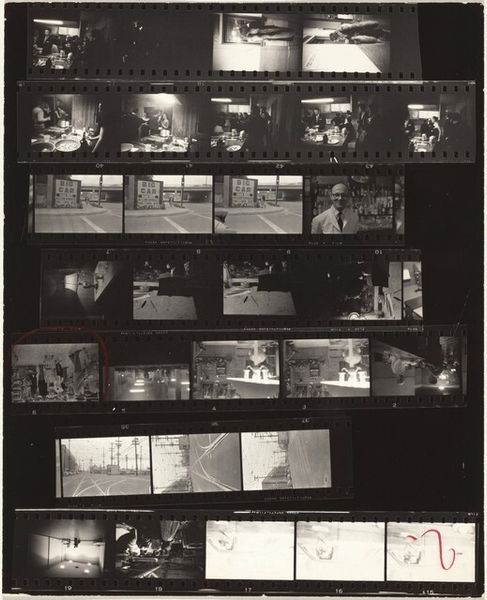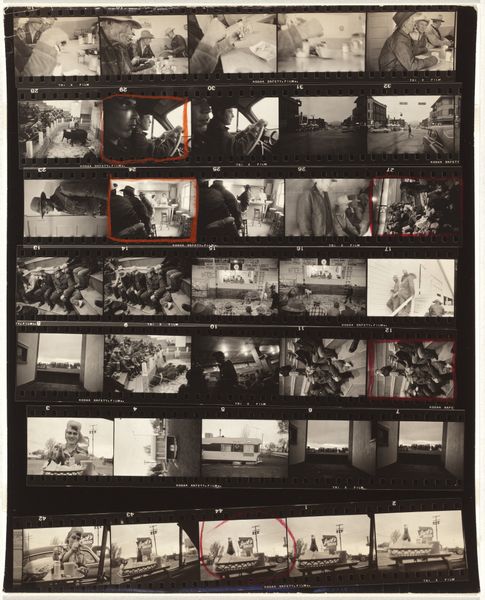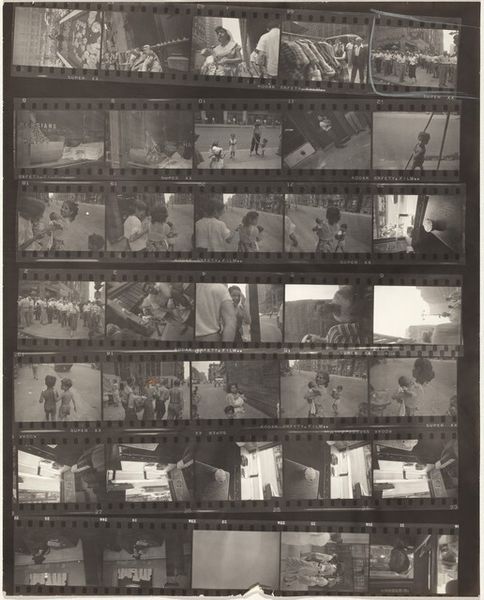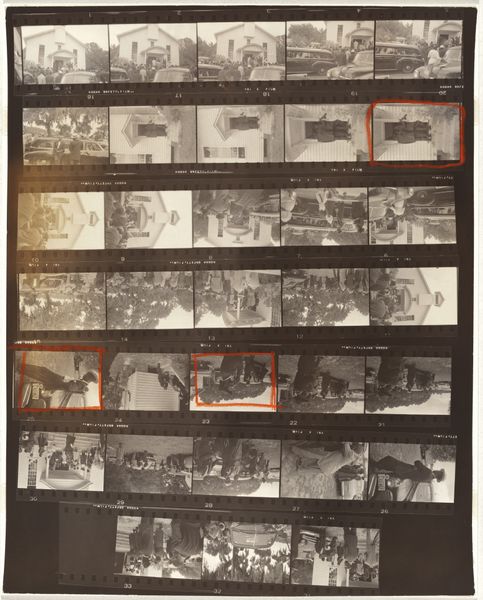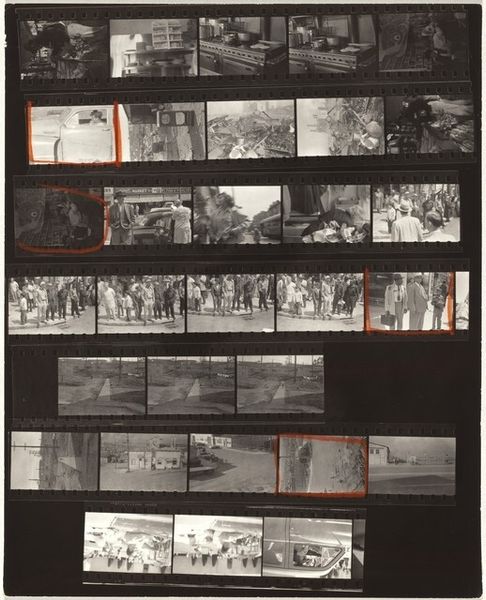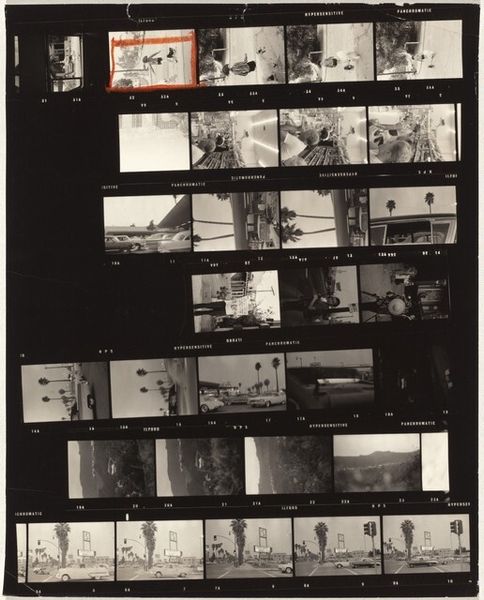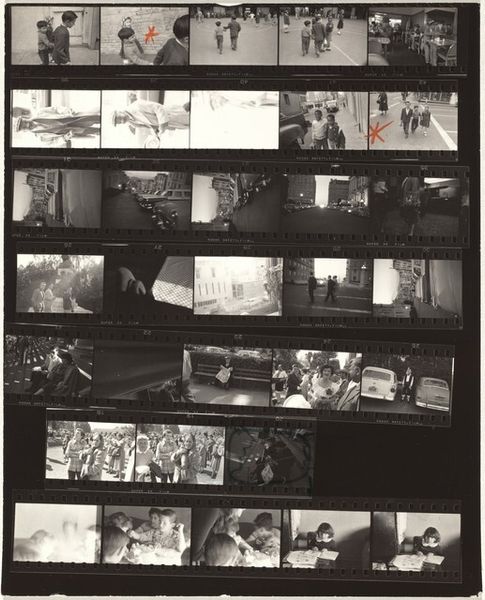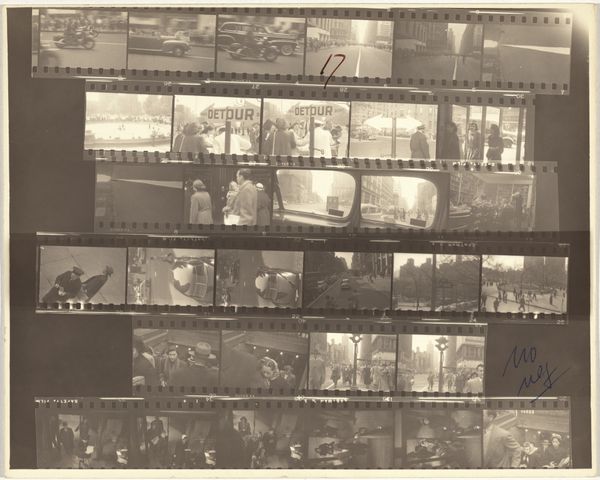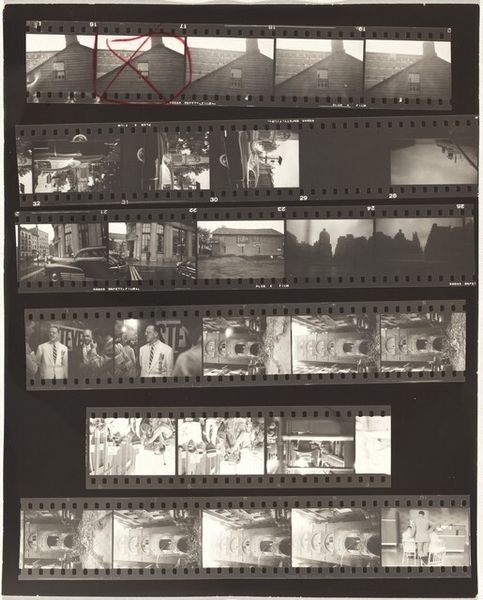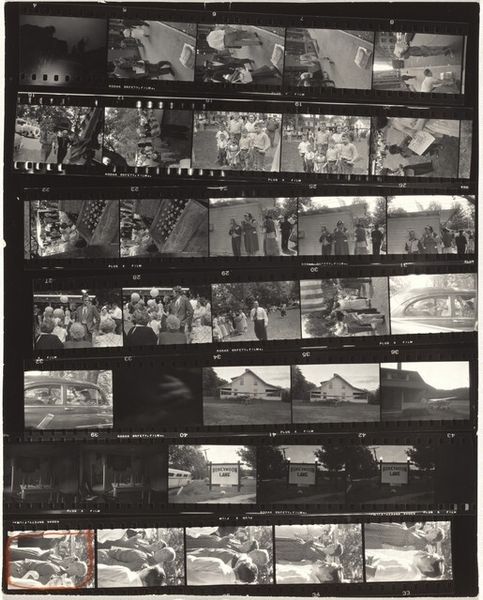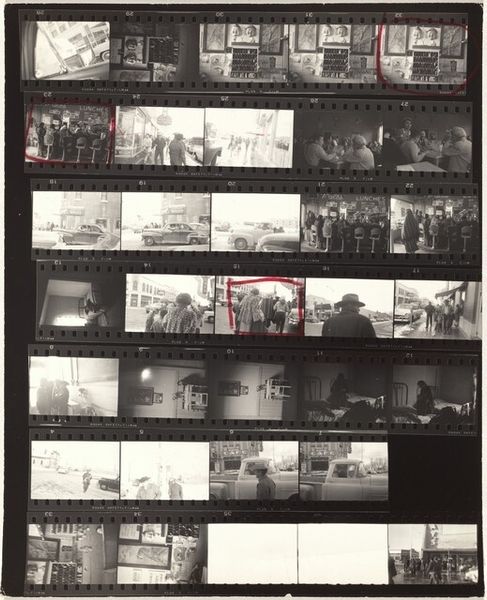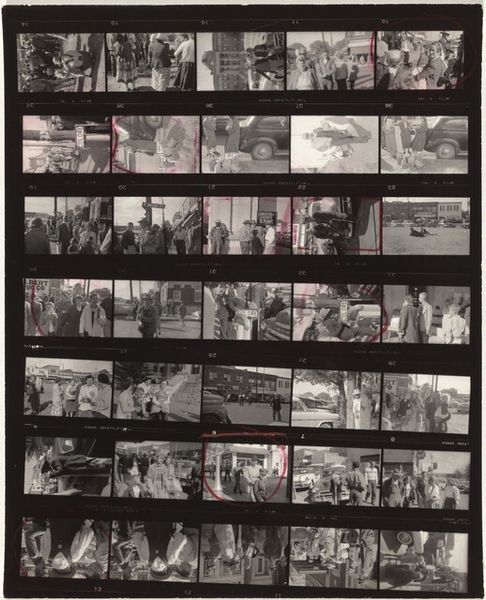
Dimensions: overall: 25.2 x 20.2 cm (9 15/16 x 7 15/16 in.)
Copyright: National Gallery of Art: CC0 1.0
Curator: Here we have Robert Frank’s “Guggenheim 690/Americans 15--Butte, Montana,” a gelatin-silver print from 1956. It offers a striking glimpse into his groundbreaking project, The Americans. Editor: Whoa, this feels like a memory strip, fragmented and raw. So many narratives hinting from this contact sheet... there's something beautifully voyeuristic and yet utterly human about it. Curator: Indeed. What you see is actually a full contact sheet. Frank captured thousands of photographs during his cross-country journey. We can analyze how it acts as a direct trace of the photographic process and reflects Frank’s method, his working, selection and editorial choices. Editor: I can almost smell the darkroom! I'm especially drawn to the row where you see those blurred figures – are they at some event or demonstration? It adds an element of unease, a social texture to this seemingly simple layout. Curator: Good eye. Considering that it was created during the McCarthy era. His perspective wasn't always celebrated. By drawing on industrial production of image making as his artistic media, the project critically challenges and engages in questions surrounding what art could or should be. Editor: Makes perfect sense...it definitely feels outside any artifical structure... There's a tension between the mundane and the momentous. That empty frame towards the bottom is killing me! It’s such a tease – it emphasizes the selection. Why THAT frame?! It leaves me wondering, makes me imagine the lost shot, and that tension becomes so potent. Curator: Frank had difficulty obtaining funding and recognition, revealing his experience of isolation amidst a society that privileged uniformity and consensus in this period, underscoring how material conditions really do affect access to means of production for diverse types of artmaking. Editor: What a glimpse into a different America. Thank you for your reading, such understanding makes me think more of how things are done rather than its look. Curator: Absolutely, art becomes so much more potent when we examine its tangible, real-world context.
Comments
No comments
Be the first to comment and join the conversation on the ultimate creative platform.
